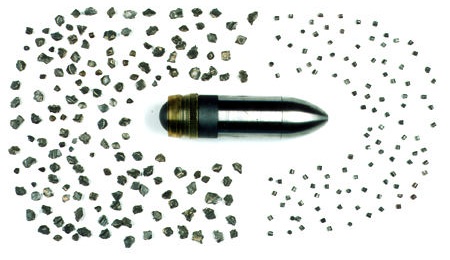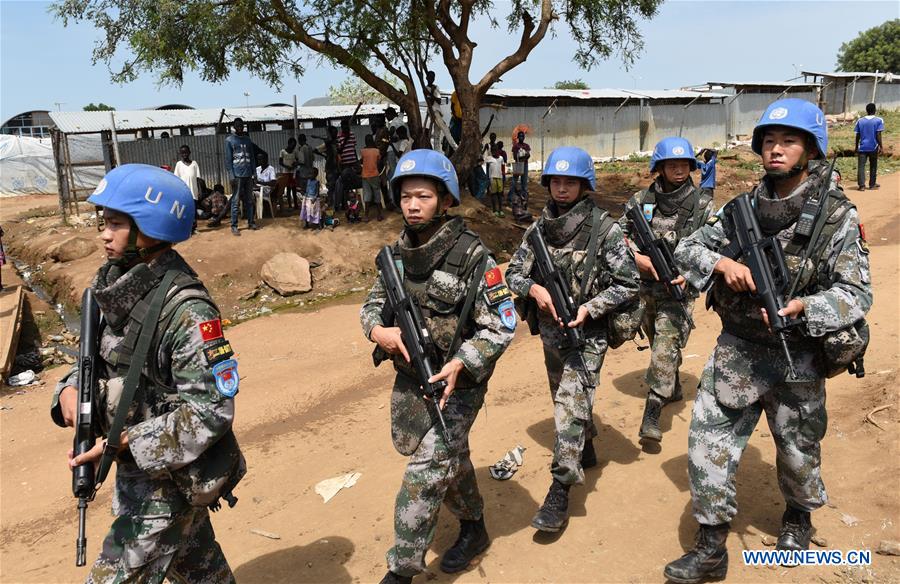Got Stuck pulling a double shift needed some time to makeup sleep
velocity matters. A 40mm grenade may pack a more deadly payload than a 20mm grenade, but you'd also need a greater amount of propellant to propel it the full distance. Even the 25mm XM25 has a maximum range of 600 meters. The 20mm QTS-11, on the other hand, can achieve 800 meters range, helped by the lesser drag induced by the smaller projectile, alongside the better propellant-projectile ratio. An airbursting 40mm grenade can definitely reach 300 meters on a ballistic path, but 800 meters? This is impossible with an underslung grenade launcher.
Okay Hold up here there is one thing that needs to be Clarified No OICW Fires High Velocity rounds.
Now I can here the WHAT!!!
but let me Clarify. In order to maintain recoil, weight and portability as well as allow the system to be mounted to a Infantry carbine without being over a meter long ( good luck maneuvering that in Urban or Jungle or a Ship). and weighing more than 30 pounds ( if you thought the XM25 was heavy) These systems are limited to low velocity 20mm shells. The XM29 fired 20x29mm rounds K11 moved up to 20x30mm The biggest is arguably the Inkunzi formerly PAWS 20 Neopup Which although not airbursting fires 20x42mm. These are not 20x110mm High velocity. These are getting there Flat trajectory by being smaller profiles. at that 800m you are talking about you are firing high arch to get the trajectories.
I believe what TE was trying to say is NOT that barrel length has no bearing on accuracy or even range for that matter (because it does and I'm sure he is aware) however when it comes to mainstream grenade launchers the barrel length itself is not the limitation but rather the sights. Once that is mitigated THEN barrel length plays a role. Until then it is not the limiting factor... low hanging fruit and all that.
Thank you.
What you get from the longer barrel is higher dwell time to allow more powder burn when combined with a low drag projectile you get better velocity which gives you stability. Stability means that the round has a longer time until the shell loses velocity and drops as well as less effect from wind. but The longer barrel has a downside It has vibration that means that as a round is fired there is more a chance it getting an imparted alteration in trajectories to counter that the longer the barrel the thicker it needs to be which in turn imparts weight.
The theory now is that even if the short UGLs were given advanced sights and aiming equipment, it still cannot reach the performance required by the military where a soldier has to reliably shoot a grenade 300m into a window. For example, with advanced sights, the UGL may be able to land the grenade with a CEP of 5m at 300m but while 5m CEP at 300m is amazing for open ground detonation, it's nowhere good enough to guarantee ingress through a window.
This is the Traditional type of Grenade launcher sighting system
If we were talking about this or the latter sight I would totally agree.
however a number of factors have stepped in here first extended range 40mm rounds these push out to 600m from under barrel launchers Some versions even out to 800m. And if really want to reach out there is the laser guided pike with a range of over 2000m from an under barrel launcher
Moreover, airbursting requires computer assistance to prime the launcher, alongside rangefinding equipment. The MPRS system for the M16, for instance, comes out to 5.5-6.5 kg loaded, heavier than the QTS-11. Current grenade launchers do NOT come with rangefinding and airburst timers as standard, and adding this equipment involves significant weight.
Standard no
That is the FN FCS 40mm Mk1 They are on the Mk3 now.
Rhinmetal offers one For use on HK and other systems.
This is the Wilcox RAAM on the side of this british L85A2 with a HK AG-C
these systems come standard with range finding. The Airbursting rounds have the enough room that some even range the airburst themselves. farther more the 40mm Shells even with the added system would still have a larger warhead.
But let’s face reality here, the PLA isn’t really gearing up with fighting itself or Russia in mind now is it?
let's not go there, but If the PLA did get into a fight It's likely that those they would be fighting are mixed forces, Coalitions are very popular these days and most of The PRC's neighbors are not fulling equipped with body armor.
Which means you have little to no logistical benefit since your troops need to stock two types of ammo now.
Multiple ammo types in inventory are standard practice. Again not High velocity, And Compared to conventional 40mm.
I would not rate an upgraded 40mm grenade launcher as the same kind of weapon as the QST11 since the QST11 should be able to shoot its rounds at a considerably higher velocity and to much greater effective ranges at far greater accuracy compared to a 40mm.
no the 40mm launcher would be more versatile in that it's not just for grenades but can be used in Breaching, less lethal urban pacification, many units can be used as standalone launchers, It can be mounted to a number of weapons meaning you don't need to build it on a weapon, And as I covered above more advanced 40mm underbarrel launcher rounds are available now.
In actuality, there's going to be real issues with the QTS-11's lethality, given its 20mm round. Moreover, does the range actually matter? It depends on the terrain: in dense, urban terrain, engagement ranges are going to be at far lower ranges and 40mm will outperform 20mm at short distances.
And Congratulations Again I point out that the Range issue is less one these days. but from a fragmentation standpoint against armored targets a 20mm Shell fragmentation is like this
That by the way was a XM29 20x29mm round
A 40mm would easily be double the fragmentation and double the blast effects.












